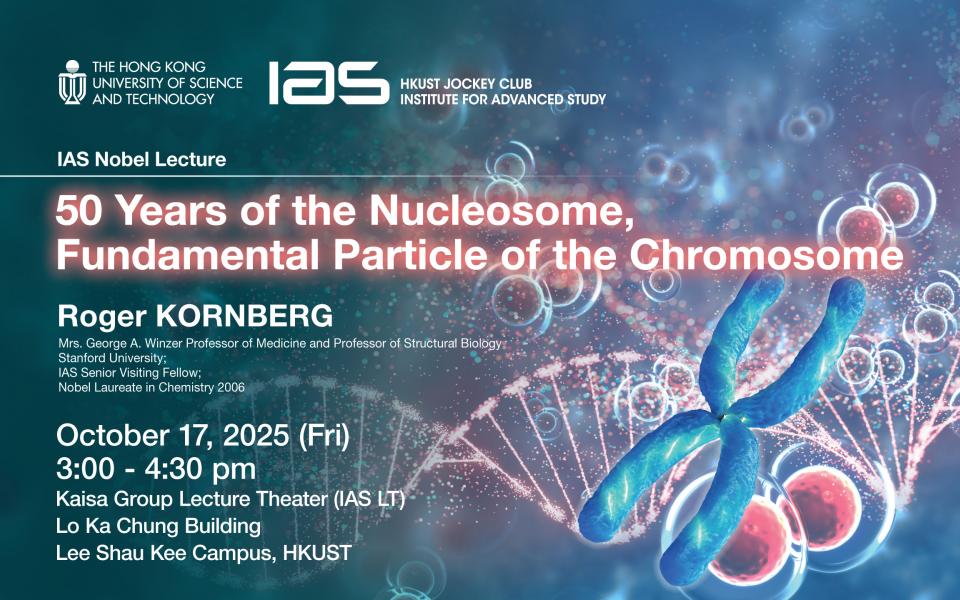IAS Nobel Lecture - 50 Years of the Nucleosome, Fundamental Particle of the Chromosome
Supporting the below United Nations Sustainable Development Goals:支持以下聯合國可持續發展目標:支持以下联合国可持续发展目标:
Abstract
The idea of the nucleosome, as the fundamental particle of the eukaryote chromosome, has long served as a basis for understanding chromosomal DNA transactions. The idea, which posited the wrapping of about 200 DNA base pairs (bp) around a set of eight histone molecules, was validated by X-ray crystallography of the histone octamer and of a so-called “core particle” wrapped by 146 bp of DNA. It is widely believed that wrapping in the core particle serves a primary purpose of contraction of length of chromosomal DNA. And the histones, among the most positively charged proteins known, are thought to stabilize the core particle by neutralizing the negative charge on the DNA. These common assumptions are inaccurate. The wrapping of DNA serves an altogether different, much more important purpose. And charge neutralization has nothing to do with nucleosome structure, but rather underlies chromosome structure on a grand scale.
About the Speaker
Prof. Roger KORNBERG earned his BS from Harvard University in 1967 and his PhD from Stanford University in 1972, both in Chemistry. He then joined the Laboratory of Molecular Biology in Cambridge University as a Postdoctoral Fellow. In 1976, he returned to the US to become an Assistant Professor of Biological Chemistry at Harvard Medical School. Two years later, he moved to the Department of Structural Biology at Stanford University Medical School, where he has remained for his entire scientific career. He served as Department Chair from 1984 to 1992 and is currently the Mrs. George A. Winzer Professor of Medicine.
Prof. Kornberg and his research group have made several fundamental discoveries concerning the mechanisms and regulation of eukaryotic transcription. He elucidated the tight packaging structures of DNA within chromosomes and revealed the molecular machinery responsible for the first step in the pathway of gene expression. He also led the discovery of RNA polymerase II in yeast, the master enzyme responsible for converting DNA code into mRNA. He showed that RNA polymerase II unravels the DNA strands and synthesizes mRNA, and also identified the many other vital components of the transcription apparatus.
Prof. Kornberg was awarded the 2006 Nobel Prize in Chemistry “for his studies of the molecular basis of eukaryotic transcription.” He has also received many additional awards, including the 1981 Eli Lilly Award in Biological Chemistry, the 1982 Passano Award, the 1990 Ciba-Drew Award for Biomedical Research, the 2000 Canada Gairdner International Award, the 2001 Welch Award in Chemistry, the 2002 ASBMB-Merck Award, the 2002 Robert J. and Claire Pasarow Foundation Medical Research Award, the 2002 Le Grand Prix Charles-Leopold Mayer, the 2003 Massry Prize, the 2005 General Motors Cancer Research Foundation's Alfred P. Sloan Jr. Prize, and the 2010 Linus Pauling Legacy Award. He is an elected member of the US National Academy of Sciences and of the American Academy of Arts and Sciences, an honorary member of the Japanese Biochemical Society, and a foreign member of the Academia Europaea and the Royal Society.
For Attendees' Attention
Seating is on a first come, first served basis.
